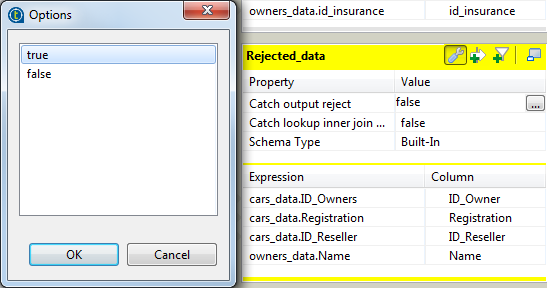Output rejection
About this task
Reject options define the nature of an output table.
It groups data which do not satisfy one or more filters defined in the standard output tables. Note that as standard output tables, are meant all non-reject tables.
This way, data rejected from other output tables, are gathered in one or more dedicated tables, allowing you to spot any error or unpredicted case.
The Reject principle concatenates all non Reject tables filters and defines them as an ELSE statement.
To define an output table as the Else part of the regular tables:
Procedure
Results
You can define several Reject tables, to offer multiple refined outputs. To differentiate various Reject outputs, add filter lines, by clicking on the plus arrow button.
Once a table is defined as Reject, the verification process will be first enforced on regular tables before taking in consideration possible constraints of the Reject tables.
Note that data are not exclusively processed to one output. Although a data satisfied one constraint, hence is routed to the corresponding output, this data still gets checked against the other constraints and can be routed to other outputs.
Did this page help you?
If you find any issues with this page or its content – a typo, a missing step, or a technical error – let us know how we can improve!

